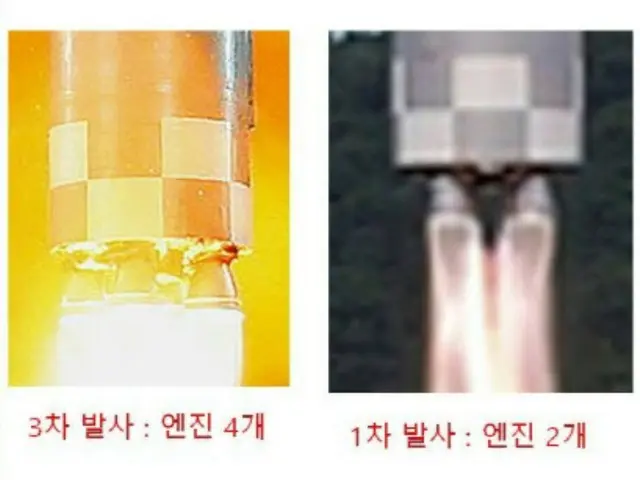be analyzed. At the time of the first launch in May, the Senrima-1 projectile had two engine nozzles. This time, it appears that four units were combined to increase the propulsive force of the first stage propeller.
On the 22nd, Shin Jeong-woo, secretary-general of the South Korean Defense and Security Forum, analyzed photos released by North Korea of the first and third launches, and said, ``The first stage of the Cheonlima-1 rocket
The was improved by clustering four engines like the Hwasong-17." It is said that ICBM technology was used to strengthen the first stage rocket propulsion and allow the reconnaissance satellite to enter orbit.
Toda. In particular, in this third launch, the Cheonlima-1 projectile was assembled and fueled with the launch pad lying on its side, similar to the Hwasong-17 ICBM. Then stand upright
The only difference is that it was launched from a fixed launch pad. The director said, ``The satellite that North Korea released is a 300-kilogram class small satellite with a size of 1 meter, and its performance is known to be extremely poor.''
``Considering that this is a country that has never operated a satellite, it is very much a test launch.'' In the future, it will be possible to increase the size of satellites and send satellites with improved performance into space.
There is a possibility that this was a test launch of a propellant to test whether it could be done. North Korea has so far attempted to send a satellite into orbit six times using long-range rockets, but was only successful twice. that it was successful
However, transmission and reception with the ground is not being performed normally. The ground observation footage taken by the satellite has never been released. These satellites have fallen out of orbit.
If Manlikyong-1 enters space orbit, it could become North Korea's third satellite. On the same day, North Korea's state media ``Korea Central News Agency'' said, ``The Chollima-1 type is
It flew normally along the established flight trajectory, and made Manlikyo-1 precisely enter orbit at 10:54:13 p.m., 705 seconds after launch."
In particular, ``Chairman Kim Jung Eun (Kim Jong-un) will attend the National Aerospace Technology Administration Pyongyang General Assembly at 10 a.m. on the 22nd.
We visited the control center and grasped the operational status of Manrikyo-1, which entered orbit.''The message was received at 9:21 a.m. over Guam in the Pacific region, and the Anderson Air Force Base and U.S. Air Force Base.
"I have seen aerospace photographs of major US military base areas, including Apra Port." The National Aerospace Technology Administration told Chairman Kim Jong-un, ``Wallikyong-1 (satellite) will be used for the next 7 to 10 days.''
After completing the "precision maneuvering process," it will officially begin its reconnaissance mission on December 1st. However, the Japanese government said that Marikyo-1 was not fast enough to enter its target orbit.
was analyzed. A high-ranking South Korean government official said, ``North Korea hastily announced that it has succeeded, but we cannot accept that as is.'' ``The United States and South Korea, and Japan, the United States, and South Korea, must work together and analyze the situation in close cooperation.''
, I will have to make a decision.'' In particular, even if Manlikyong-1 reaches orbit, it is unclear whether North Korea's reconnaissance satellite will be able to perform its intended functions. Video taken by a reconnaissance satellite
The resolution of the image must be at least 1 meter, but South Korean military authorities believe that Manrikyo-1 is far less than this.
2023/11/22 19:25 KST
Copyrights(C) Edaily wowkorea.jp 99

